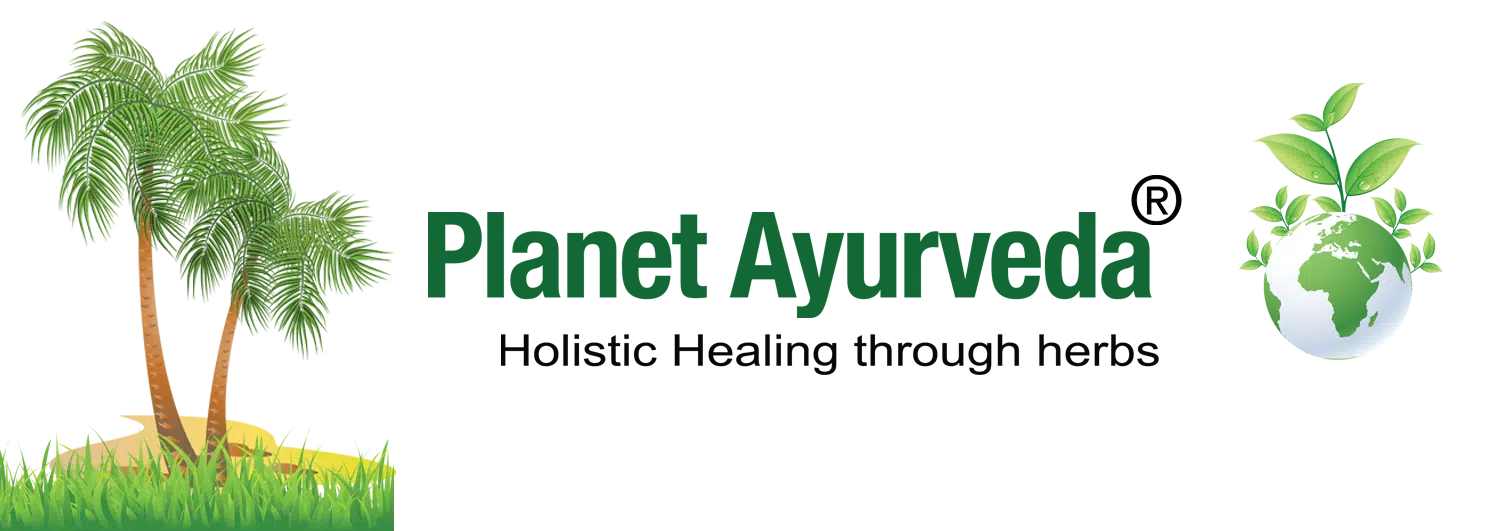Vateria indica Linn./ Sarjaka – Ayurvedic Properties, Practical Uses & Medicines
Abstract
Vateria indica Linn., commonly known as Indian Copal Tree or Dhupa Vruksha, is a large, evergreen tree native to the Western Ghats of India. It is renowned in Ayurveda for its resin, known as Sarja Rasa, which possesses significant medicinal and aromatic properties. Traditionally used in wound healing, respiratory conditions and inflammation, the tree also yields resin for incense and perfumery. This article explores the plant’s taxonomy, morphology, traditional uses, chemical constituents and therapeutic potential.

Introduction
Sarja is a resin derived from Vateria indica, which is highly valued in Ayurveda for its potent medicinal properties. It is used in the treatment of infected wounds, diarrhoea, earaches and intestinal worm infestations due to its antimicrobial and anti-inflammatory effects. Additionally, the aromatic gum-resin serves as a base ingredient for preparing herbal smoking sticks (Dhoomapana sticks), which are used therapeutically in Ayurvedic fumigation therapies for respiratory and neurological conditions.
Scientific Classification
- Kingdom – Plantae
- Subkingdom – Tracheobionta
- Class – Magnoliopsida
- Order – Malvales
- Family – Dipterocarpaceae
- Genus – Vateria
- Species – Vateria indica Linn.
Synonyms
- Devadhupa – The resin is used for fumigation in Ayurvedic rituals and therapies.
- Rala – The resin has a pleasing aroma that calms the mind.
- Sarjarasa – The medicinally useful part is the resinous exudate obtained from the bark.
- Ajakarna
- Bastakarna
- Lata Vruksha
- Sarjaka
- Sala
- Maricapatraka
- Kashaya
- Chirapatraka
- Kalakuta
- Rajodbhava
- Vallivruksha
- Gandhavruksha
Vernacular Names
- English – White Dammer Tree, Dammer (gum), Piney Resin Tree, Indian Copal Tree
- Hindi – Safed Dammar, Kharuva
- Kannada – Dhoopada Mara, Bili Dhoopa
- Telugu – Tella Damaramu
- Tamil – Vellai Kungiliyam, Vellai Kundurikam, Paini Pisin
- Malayalam – Vella Kundurukkam, Paini Pasha
Habitat
Vateria indica is native to the Western Ghats, particularly in the states of Kerala, Karnataka and Tamil Nadu. It thrives in moist evergreen forests, usually found at elevations between 300 to 1200 meters. The tree prefers well-drained, lateritic or red loamy soil and requires high rainfall, making it a key component of tropical forest ecosystems.
Morphology
Vateria indica is a large evergreen tree characterised by its distinctive whitish bark. The leaves are simple, elliptic-oblong in shape, with a cordate (heart-shaped) base, and a leathery texture. The tree bears terminal panicles as its inflorescence, which hold small, white flowers that emit a mild fragrance. The fruits are fleshy capsules, typically containing one seed, and develop after the flowering season.
Classical Categorisation
- According to Kaiyadeva Nighantu – Aushadhi Varga
- According to Dhanvantari Nighantu – Amradi Varga
- According to Raja Nighantu – Prabhadradi Varga
- According to Bhavaprakasha Nighantu – Vatadi Varga
Ancient Verses
अजकर्णः कटुस्तिक्तः कषायोष्णो व्यपोहति । कफपाण्डुश्रुतिगदान् मेहकुष्ठविषन्त्रणान् ॥
(Bhavprakash Nighantu Vatadi varga 21)
According to the above shloka, Ajakarna or Sarjka contains astringent, bitter and pungent taste, hot potency and balances the Kapha dosha. It is effective in the management of anaemia, diabetes, leprosy, poison, wounds and ear disorders.
Ayurvedic Properties
- Taste (Rasa) – Bitter (Tikta), Pungent (Katu), Astringent (Kashaya)
- Potency (Veerya) – Hot Potency (Usna)
- Effect on tridosha – Balance Kapha dosha
Therapeutic Properties
- Varnya – Enhances skin texture and natural complexion
- Kaphahara – Alleviates Kapha; beneficial in asthma and cough with phlegm
- Svedahara – Reduces excessive sweating and body moisture
- Mada – Effective in cases of intoxication
- Krumi – Helps manage intestinal worm infestations
- Vardhma – Useful in treating scrotal enlargement
- Vidradhi – Supports the healing of abscesses and swellings
- Badhirya – Aids in improving hearing in deafness
- Yoniruja – Relieves pain in the vaginal region
- Karnaruja – Beneficial for managing earache
- Atisara – Useful in diarrhoea and dysentery conditions
Systemic Actions
External
Vateria indica exhibits analgesic, antimicrobial, wound healing and cleansing properties. It promotes fracture healing and its paste can be applied externally to treat skin conditions such as dadru (ringworm), boils, cracked feet and burns. Both bark and resin are useful in painful inflammatory conditions. The resin is also employed for fumigation purposes. For ear infections, a decoction of the bark is recommended for external use.
Internal Uses
- Nervous System– It possesses analgesic effects and its decoction helps relieve body pain caused by falls or injuries.
- Digestive System– It acts as an absorbent and is indicated for diarrhoea, rectal bleeding and haemorrhoids.
- Circulatory System– It is used in bleeding disorders and anaemia resulting from excessive blood loss.
- Respiratory System– Bark pacifies Kapha dosha, while the latex aids in expelling vitiated Kapha from the respiratory tract.
- Reproductive System– Effective in treating leucorrhea, menorrhagia, metrorrhagia and inflammatory conditions of the uterus and related structures.
- Excretory System– Reduces urine output, making it useful in diabetes, and the resin’s antimicrobial properties help treat urinary tract infections.
- Satmikarana (Tissue Healing)– Beneficial in healing fractures and wounds. It also supports weight management and related health issues.
Chemical Composition
- Oleoresin contains essential oils
- (+)-Amphena
- Alpha-pinene (α-pinene)
- Beta-pinene (β-pinene)
- Limonene
- Chamazulene
- Resin acids (such as Agatholic acid, Vaterinic acid)
- Essential oils (borneol, pinene)
- Triterpenoids
- Phenolic compounds
- Flavonoids
- Tannins
- Lignans
Modern Overview
Antiulcer Activities
A high dose (500 mg/kg) of Vateria indica resin extract demonstrated significant, dose-dependent anti-inflammatory and anti-ulcer activity in experimental models of ethanol-induced and L.-induced gastric ulcers. It notably reduced ulcer indices (**p≤0.01) at the higher dosage (500 mg/kg), with effects comparable to the standard treatment group (ranitidine). These findings suggest that the resin extract of Vateria indica Linn. possesses potent anti-ulcer properties.
Anticancer Activities
This study evaluated the anticancer potential of Vateria indica stem bark against two cancer cell lines: mouse glioma (C6) and Ehrlich ascites carcinoma (EAC). Preliminary screening revealed that both alcohol and water extracts of the stem bark exhibited significant cytotoxic activity. However, not all extract fractions were effective. Notably, the acetone, ethanol and petroleum ether fractions demonstrated cytotoxic effects on cancer cells, while the remaining fractions showed no activity. Based on these findings, it can be concluded that Vateria indica possesses antitumor properties.
Antioxidant Activities
The stem bark extract of Vateria indica is rich in phenols and flavonoids, making it a valuable natural source of antioxidants and antimutagens. These compounds may serve as potential therapeutic agents for preventing or slowing the progression of ageing and oxidative stress-related degenerative diseases.
Practical Uses
- For respiratory relief: A small piece of Sarja Rasa resin can be burned like incense and the fumes help relieve cough and cold.
- For wound healing: Resin powder can be mixed with coconut oil and applied to wounds to aid healing and prevent infection.
- For air purification: Burning the resin as dhoop disinfects the surroundings and imparts a pleasant aroma.
- For mouth ulcers: A small pinch of resin powder can be mixed with honey and applied locally.
Part Used
- Bark
- Gum
Dosage
- Gum Powder- 1-3 gm
- Bark decoction- 50-100 ml
Ayurvedic Medicines
- Lavangadi churna
- Chinchadi Thailam
- Sarvamayanthaka Ghritam
Planet Ayurveda Medicines
Conclusion
Vateria indica is a medicinally valuable plant with significant pharmacological potential. Studies have demonstrated its anti-ulcer, anti-inflammatory, anticancer, antioxidant and antimutagenic properties, largely attributed to its rich content of bioactive compounds such as phenols and flavonoids. Extracts from its resin and stem bark have shown promising results against various disease models, including gastric ulcers and cancer cell lines. These findings support the traditional use of Vateria indica in herbal medicine and highlight its potential as a natural therapeutic agent for managing oxidative stress-related disorders, inflammation, and tumour growth. Further research and clinical studies are warranted to explore its full therapeutic efficacy and safety profile.



